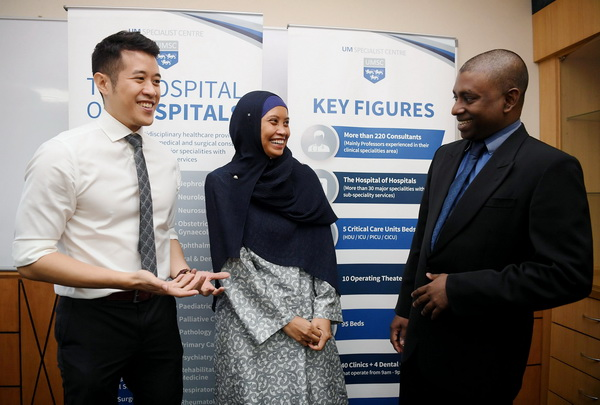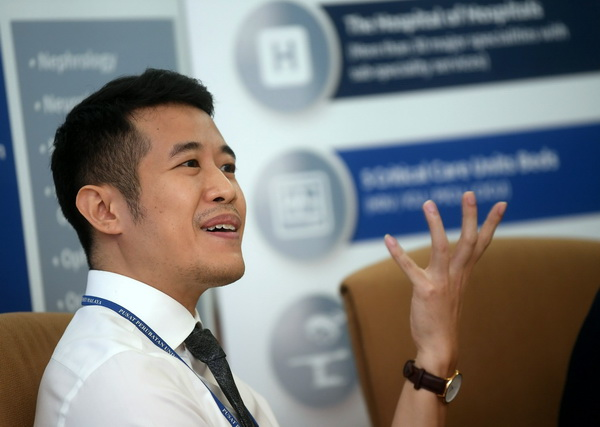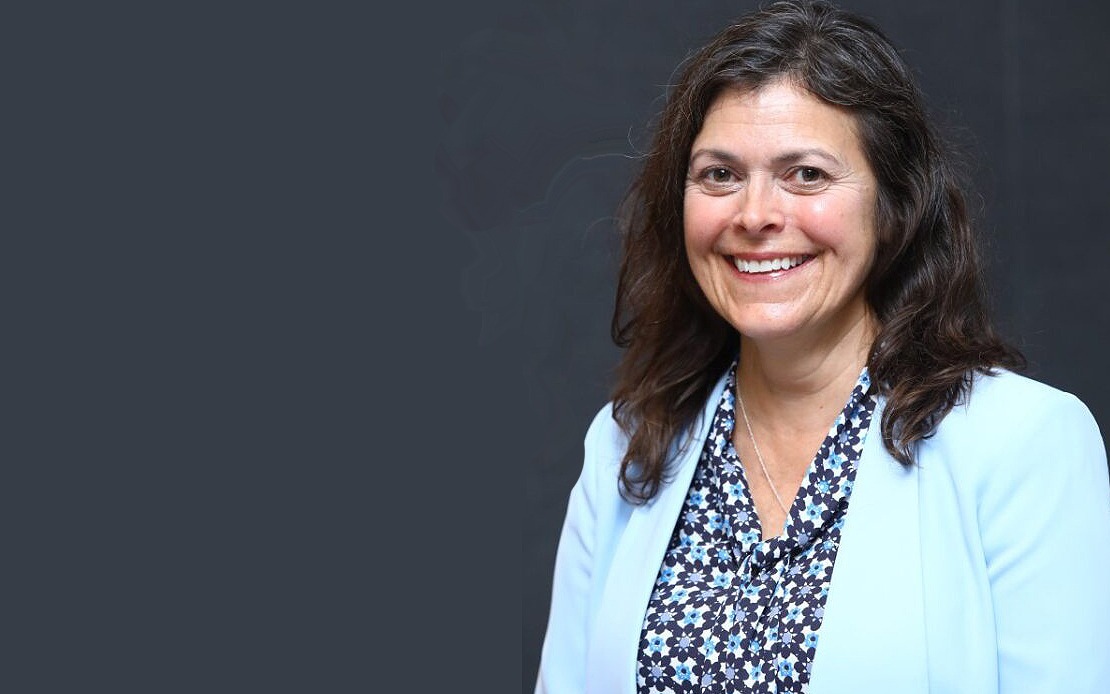UMSC's Multidisciplinary Team-Based Approach On Lung Cancer Gives Hope To Patients

(First of a two-part interview)
By Jenny Imanina Lanong Abdullah and Murni Nasri
KUALA LUMPUR, (Bernama) -- ‘Along’ was six when her grandfather was diagnosed with stage four lung cancer.
“I was so worried that ‘Atuk’ (grandfather) would die soon, even though I did not know what cancer was back then,” said Along.
She remembered how resolute her grandfather was in fighting the disease, that he was able to accept the tragic fate that had befallen him. However, in his last days the pain was too unbearable and Atuk could not smile anymore.
As an adult, Along’s family was once again devastated when her youngest aunt was diagnosed with the same cancer.

Consultant Cardiothoracic Surgeon, Dr Sivakumar Krishnasamy. --fotoBERNAMA
“My aunt wanted to get better but the disease worried her too much. She succumbed to the disease two years after diagnosis,” she said.
According to Along, the daunting experience had made her realise that family support is crucial and a necessity in the fight of a patient’s ordeal.
The word cancer naturally scares everyone and sadly the perception is that, ‘your life may stop the day you are diagnosed’. A devastating interpretation unfortunately for most.
The truth is cancer is seen to be one of the most common health dilemma in the world today. Despite the rapid increase in the number of cancer cases, the important steps taken in the field of health technology makes it possible to diagnose cancer early. Even at an advanced stage, there is ‘hope’ for treatment and favourable outcome.
KEEPING THE HOPE
According to Health Minister Datuk Seri Dr Dzulkefly Ahmad, the three most common cancers among men in Malaysia were colorectal (16.4 per cent), lung (15.8 per cent) and nasopharynx (8.1 per cent); whilst the three (3) most common cancers among women were breast (32.1 per cent), colorectal (10.7 per cent) and cervix (7.7 per cent). Lung cancer was the fifth most common cancer among women.
In 2014, National Cancer Registry data indicated that over 4,000 cases of lung cancer have been reported every year.
Meanwhile, the latest World Health Organisation data published in 2017 has shown an alarming 4,644 lung cancer deaths in Malaysia, or 3.36 per cent of total deaths are due to lung cancer.
Having said that, UM Specialist Centre ( UMSC )'s Consultant Cardiothoracic Surgeon, Dr Sivakumar Krishnasamy said there is hope for cancer patients.
“We don’t give up on our patients easily without a thorough diagnosis and assessment. Thereafter, appropriate treatments are planned accordingly. To quote a patient’s experience, I had a 42-year-old patient who was referred to me with a stage four lung cancer. He initially presented with headache to the neurosurgeon where he was found to have a growth in the brain,” he said.
A CT scan subsequently also detected a growth in his right lung.
According to Dr Sivakumar, a multidisciplinary team consisting of the surgeon, respiratory physician and oncologist was applied in his management and it was decided that the best treatment for him would be removal of the lung tumour and radiotherapy to the single brain lesion.
“I went ahead and removed the lung tumour in January 2017, and today the patient is still alive and having a good life with his children. This tells you that even at stage four disease, there is still hope for patients,” Dr Sivakumar told Bernama in an interview recently.
LUNG CANCER
Explaining further on how cancer grows in the body, Dr Sivakumar said, there has to be a stimulant or a failure to suppress the cancerous gene.

Consultant Respiratory Physician Dr Ernest Poh Mau Ern during the interview. --fotoBERNAMA
This stimulant, according to him, can come from external environment meanwhile the failure to suppress the gene can happen internally or originate from external environment.
In terms of lung cancer, Dr Sivakumar confirmed that 85 to 90 per cent of patients with lung cancer have been shown to be a smoker at some point of their life or someone who has been exposed to people who smoke.
“There are many factors associated with lung cancer and many studies are still ongoing globally to investigate the causes behind this,” he added.
RISK FACTORS AND SYMPTOMS
Asked if genetic plays a part, he cautioned that the risk for another member in the family to contract the disease is always imminent and the whole family has to take precautions and not take symptoms lightly.
“What’s more important here is the awareness of the symptoms and the mindfulness that (they) are at risk. That’s what we are trying to educate the people that there is always a risk for anyone else to get it in the family line,” said Dr Sivakumar.
National Cancer Registry and UMSC data has also shown the highest number of lung cancer cases were reported amongst the Chinese, followed by Malays, Indians and other races.
Explaining further on this, UMSC ’s Clinical Oncologist Dr Adlinda Alip said not all genetic mutations are hereditary in nature, for example a gene called epidermal growth factor receptor (EGFR) mutation is seen in a sporadic manner amongst Asian patients.
This means lung cancer can happen to anyone, even for non-smokers who have no family history of the disease.
Meanwhile UMSC ’s Consultant Respiratory Physician, Dr Ernest Poh Mau Ern pointed out that while smoking definitely increases one’s chances of getting lung cancer, other factors also contributes to increased risk.
These include a family history of cancer, genetics, the exposure to second hand smoke and asbestos, seen in people who were doing roofing and tile works in the past where asbestos was widely used for insulation purposes.
“We have to be careful not to make an assumption that just because one does not smoke, they are not at risk of getting lung cancer. Environmental factors such as air pollution, both outdoor and indoors, have long been a concern, with more research linking exposure to lung cancer. The crucial question is which pollutants may be responsible which can potentially inform regulatory action to improve air quality and public health,” said Dr Poh.
Dr Poh pointed out that symptoms may not be present in the early stages of lung cancer which explains why most patients usually present rather late in the disease. Despite so, symptoms such as a prolonged cough, appetite loss and unintentional weight loss, coughing out blood, unexplained shortness of breath, back or joint pains, weakness of upper or lower limbs, headaches and visual disturbances should not be taken lightly.
“When you have a symptom that doesn’t seem to be going away, for example a cough that has persisted for two weeks despite a visit to your family doctor, you should get a specialist input on the matter. An early referral to a specialist may make all the difference in the world when it comes to respiratory diseases such as lung cancer.”
LATE DETECTION
According to Dr Sivakumar, lung cancer is the most aggressive cancer where ‘it grows by the day’ and most cases in Malaysia present at an advanced stage.
Dr Adlinda added that early detection would definitely increase the odds for successful treatments, which in turn would increase patients’ survival.
“If they present late, treatment will be geared towards prolonging life and improving quality of life,” she said.
UMSC ’S MULTIDISCIPLINARY TEAM APPROACH
UMSC prides itself in embracing a ‘multi-displinary team (MDT) approach’ in treating its patients. For lung cancer, the MDT consists of the respiratory physicians, cardiothoracic surgeons, oncologists, radiologists and the pathologists. The team convenes fortnightly to discuss cases that require attention to find the best treatment solutions for patients.
“We think it is a crime if only one doctor solely takes it upon himself to manage the patient as different specialists may have a different view and approach to the disease. We come along together, discuss, and then decide on the best treatment options for the patients. We then present these options to the patient who ultimately decides which treatment he/she prefers,” Dr Sivakumar explained.
Some patients may only need one modality of treatment, while others may require a combination of treatment modalities such as surgery, radiotherapy, chemotherapy, immunotherapy and targeted therapy, explained Dr Adlinda.
Being a university-based hospital, there are also options of numerous clinical trials investigating new treatment that may potentially benefit patients.
Explaining the journey of patients initially presenting themselves to UMSC , Dr Ernest Poh says patients with one or the above symptoms would typically see a respiratory physician upfront. After a thorough history and physical examination, patients would then be sent for a basic chest radiograph. If an abnormality is detected on the chest radiograph, the patient may need to undergo a computed tomography (CT) scan or a positron emission tomography (PET)-CT scan.
For a diagnosis of lung cancer to be made and to differentiate between the different types of lung cancer, a tissue biopsy will be arranged. Generally, this can be done via several approaches, for example via a CT guided percutaneous biopsy where a biopsy needle will be passed externally to reach the tumour (if it is located at the periphery of the lung) or via a bronchoscopy, where a scope will be passed through either the nose or the mouth into the airways to obtain a biopsy (if the tumour is located centrally).
The biopsy sample will then be handed over to the pathologist for processing and interpretation. Once the diagnosis and type of lung cancer is confirmed, the patient will be staged appropriately based on the scans and the case will be discussed at the MDT meetings described above. Dr Poh emphasised that these are all done rather quickly so that the best treatment options can be offered to patients without any unwarranted delay.
Fast Facts:
Cancer that begins in the lungs are called primary lung cancer. Cancer that spreads to the lungs from another place in the body is known as secondary lung cancer.
Types of primary lung cancer:
Non-small-cell lung cancer – the most common type, accounting for more than 80% of cases; can be either squamous cell carcinoma, adenocarcinoma or large-cell carcinoma
Small-cell lung cancer – a less common type that usually spreads faster than non-small-cell lung cancer (NHS, UK)
Lung, trachea and bronchus cancers were the second most common cancer among male and fifth among female. The incidence was higher among male and started to peak at the age of 60 (Malaysian National Cancer Registry Report 2007-2011)
The Lifetime Risk: 1 in 55 for all male | 1 in 62 for Malay | 1 in 43 for Chinese | 1 in 103 for Indian | 1 in 135 for all female (Malaysian National Cancer Registry Report 2007-2011)
Extremely high percentages of the lung, trachea, and bronchus cancer cases were detected at late stage (stage three and four) for both sexes (89 per cent in male; 91 per cent in female) (Malaysian National Cancer Registry Report 2007-2011)
--BERNAMA
For more information click here
HealthEdge
EXCLUSIVE

Pet Vaccination, Public Awareness And Surveillance Key Towards Rabies-free Southeast Asia - Experts
KUCHING, Dec 11 (Bernama) -- The goal of making Southeast Asia free from human rabies can be achieved through a total understanding of the disease, how it can be prevented and responsible pet ownership among communities, say experts.
read more ››IN FOCUS

TAVI KAEDAH BAIK PULIH INJAP JANTUNG TANPA PEMBEDAHAN



